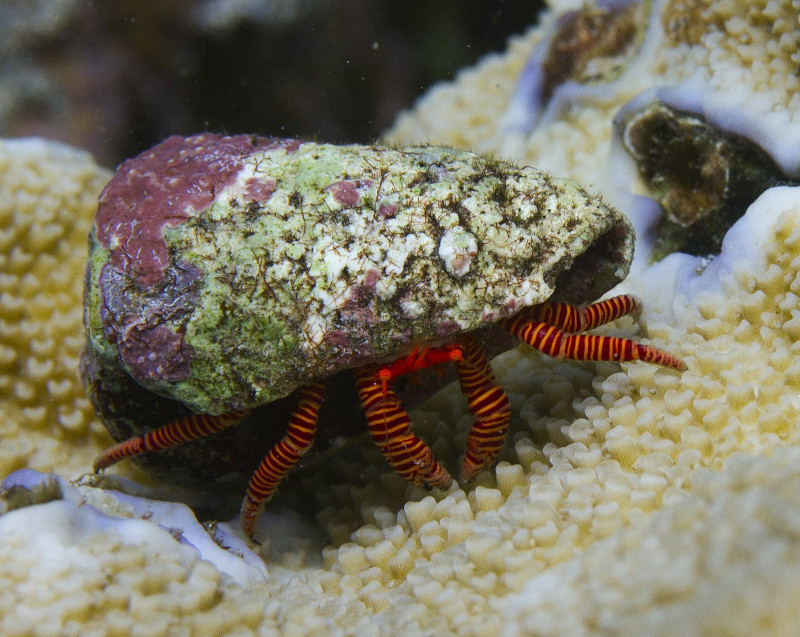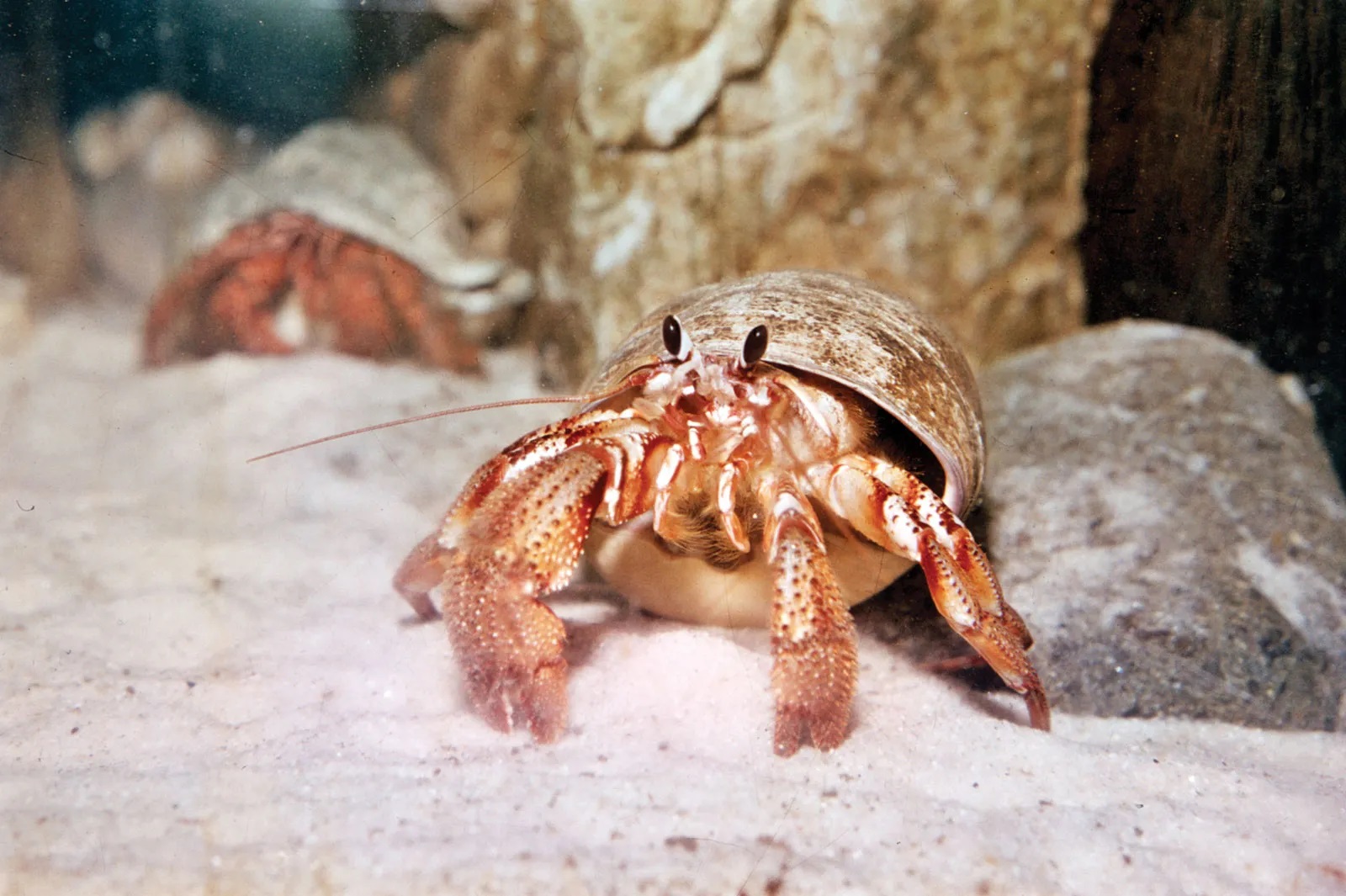halloween hermit crab jual softlens halloween
Learn how to keep Halloween hermit crabs (Ciliopagurus strigatus) in your reef aquarium. Find out their natural habitat, behavior, feeding, and reproductive habits. Learn about the halloween hermit crab, a brightly colored aquatic crustacean that lives in tropical waters and eats algae and detritus. Find out its characteristics, diet, use in aquaria, and more from this Wikipedia article. Learn about the Halloween Hermit Crab, a colorful and useful aquarium cleaner that eats algae and sifts sand. Find out how to care for it, what to feed it, and where to buy it online. Show More. The halloween hermit crab typically grows to 2 inches (5.1 cm) in length, which is fairly large in comparison to other hermit crabs. It has a noticeably flattened, pure white shield, about.315 inches (8 mm) long. It is a nocturnal species, and has been described as "conspicuous". It lives primarily in empty cone shells, mainly those Learn how to keep Moon Crab, also known as Halloween Crab or Purple Moon Crab, as a pet. Find out their appearance, lifespan, habitat, diet, behavior, tank mates, and common diseases. Learn how to keep the colorful and easy-going Halloween hermit crab (Ciliopagurus strigatus) in your aquarium. Find out its natural habitat, diet, compatibility, and more tips from FantaSEA Aquarium experts. The halloween hermit crab, Ciliopagurus strigatus, also known as the striped hermit crab or orange legged hermit crab, is a brightly colored aquatic hermit crab of the family Diogenidae. Besides its ability to routinely clean algae in aquariums, the halloween hermit crab's festive striped coloration also appeals to enthusiasts; it is considered the most brightly colored hermit crab in normal The Halloween Hermit Crab, scientifically known as Dardanus megistos, is a striking invertebrate popular among reef aquarium enthusiasts. It is easily recognizable by its bright orange legs with purple bands, resembling the festive colors of Halloween, which is how it got its common name. This species is not only admired for its vibrant The Halloween Hermit Crab (Ciliopagurus Strigatus), also known as the Striped Hermit Crab or Orange Legged Hermit Crab, is a brightly colored aquatic hermit crab of the family Diogenidae. Besides its ability to routinely clean algae in aquariums, the Halloween Hermit Crab or Striped Hermit Crab’s festive striped coloration also appeals to Halloween hermit crabs need a habitat that is at least 10 gallons in size. The habitat should include a substrate, such as sand or gravel, a hiding place, and a water dish. Feed your Halloween hermit crab a variety of foods. Halloween hermit crabs can eat a variety of foods, such as fruits, vegetables, and pellets. Keep the habitat clean. The turbo and trochus shells are essentially useless to the Halloween hermit crab because it isn't the right shape. They have flat bodies, so they need flat shells. If you don't give hermit crabs adequate homes, don't blame them for acting out. On the other hand, the Halloween hermit crab is one of the slowest and docile hermit crabs I've ever The Halloween Hermit Crab also known as the Striped Hermit Crab or Orange Legged Hermit Crab. It has a bright orange body with red banding. With its unmistakably attractive appearance and the propensity to consume nuisance algae such as green hair and cyanobacteria it is a desired addition to many Marine Aquariums. Also known as the Anomura Crab. The Halloween Hermit Crab is found in the Indo-Pacific region growing up to 6cm in length. Found both day and night, over coral rubble and rock platforms, of coral reefs. Gecarcinus quadratus in Panama. The carapace of G. quadratus may reach a length of 5 cm (2.0 in). It has a pair of largely purple claws, red-orange legs, and an almost entirely black carapace with a pair of yellow, orange, purple or reddish spots behind the eyes, and an additional pair of whitish spots on the central-lower carapace. As Halloween hermit crabs are omnivores, they will do best in an aquarium with green algae for them to eat as well as some meaty foods. Halloween hermit crabs will eat a lot of green algae growing in your aquarium as the biggest part of their diet. This would include all types of green algae, hair algae, and macro algaes. If the algae level Halloween hermit crabs molt to grow: Molting is a natural process for Halloween hermit crabs as it allows them to grow and develop. Molting is essential for Halloween hermit crabs: The molting process is vital for the health and well-being of Halloween hermit crabs, ensuring their exoskeleton remains strong and intact. Origins, Natural Habitat of the Halloween Moon Crab. Halloween Moon Crab is a tropical terrestrial crab that was initially described by de Saussure in 1853. This species has a general distribution along the Atlantic and Pacific coasts of tropical North, Central, and South America. Are halloween hermit crabs reef safe? Care must be taken before deeming the halloween hermit crab reef safe! Yes, they can be reef-safe if they are kept well fed with a meaty fare. In case the halloween hermit crab is feeling hungry, it will not hesitate to consume corals. I was fascinated by these crazy-colorful crabs, who were approximately 10 times the size of my strawberry hermit crabs and had black bodies with brilliant orange legs, jack-o’-lantern white-rimmed, protruding eyes and dangerous-looking purple claws that they happily raised into a sparring position if any uninvited fingers intruded. The Halloween moon crab is a small and colorful crustacean. It has a compact body with a hard, rounded shell or carapace, measuring about 2 to 2.5 inches across. This dark shell is likened to the deep midnight sky.
Photos











